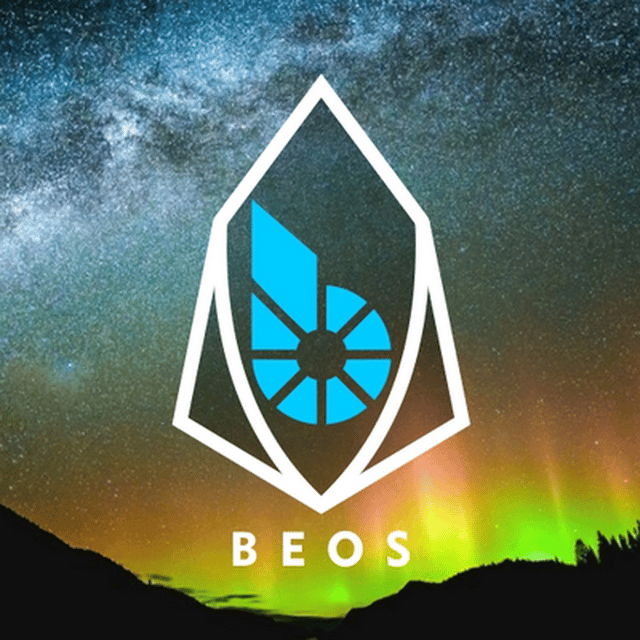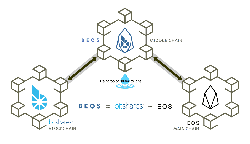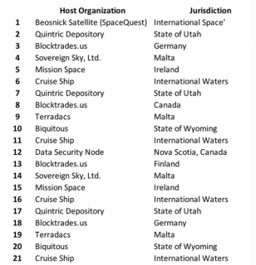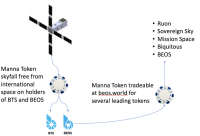BEOS

BEOS
BEOS is a privately funded blockchain, a straight clone of EOS intended to serve as a middle chain between BitShares and the EOS main chain. Its goals are token portability and jurisdictional agility. It does these functions without requiring any modifications to or cooperation from either BitShares or EOS communities, neither of which are involved in its development. BEOS tokens serve the same functions as the EOS token on the EOS main chain - giving holders voting and access privileges to network resources.
BEOS seeks to develop a new kind of censorship resistance by designing the blockchain to be "intra-jurisdictional" (confined to one jurisdiction) and ultimately "jurisdictionally agile" (able to control which operations take place in explicitly designated jurisdictions).
Token portability means that all BTS and EOS tokens can move between these systems transparently, increasing the utility of the BitShares smart coin factory and access to EOS smart contract technology.[1]
How is jurisdictional agility being implemented in BEOS?
In BEOS, block producers can publish the regions in which they are located, and users can specify one or more optional jurisdictional regions in which their transaction is to be processed.
When a user specifies a jurisdiction for a transaction, that transaction will be delayed until it can be processed by a block producer in one of the regions specified.
By allowing users to specify where their transactions are processed, BEOS users can gain more legal certainty as to the laws that govern their transactions.
This is very similar to the way businesses specify the governing legal jurisdiction in a typical written contract.
This can be very important when disputes arise over a payment, for example.
Arguments about what region has jurisdiction over a transaction can also be expensive, so the additional clarity provided by a jurisdictionally-aware blockchain can benefit all parties concerned, as it avoids wasteful legal wrangling.
Example using the Greymass wallet to pick a jurisdiction for a transaction:[20]
The BEOS rainfall ended July 7, 2019, next Skyfall will be dropping a new token from space called Manna which can be traded for upcoming token offerings.
Each time SpaceQuest satellite passes over the ground station in Alaska it will download Manna tokens to the BEOS wallets of all who are holding BTS and BEOS on the BEOS network.
Because Alaska is near the pole, token holders will get multiple passes per day from the satellite in polar orbit.
Every holder of a staked BTS and BEOS token will share Manna tokens to be dropped for 888 lucky days.
The 32GB of RAMfall is still in operation, continuing for 470+ days.[16]
RAM Distribution
RAM and how it's distributed has been a major point of contention on the EOS main net.
RAM speculation has led to hoarding which has driven the costs of deploying software far higher than it should be.
RAM should be allowed to trade on the open market but the Bancor algorithm is not the open market.
It can be easily gamed and has been to the detriment of developers and token holders.
Decoupling EOS token ownership from ownership of RAM has had negative consequences for the entire EOS network and arguably, the price of EOS tokens.
It has created a massive disparity between the cost of RAM and all other network resources.
Telos is proposing an alternative RAM distribution strategy where the Telos Foundation will attempt to control RAM prices through controlling supply.
Both the EOS and Telos models have merit but neither is ideal.
They have effectively removed the most valuable part of the network from token owners forcing them to spend their tokens simply to utilize the network.
Network resources should be allocated to the token owners in proportion to their token ownership.
The BEOS network will distribute RAM to the Targeted Demographic in the same way BEOS tokens will be distributed except that the rainfall period will occur over a longer period of time.
It will start when the BEOS rainfall begins and last for at least 40 fortnights (80 weeks).
This will serve as a strong incentive for BTS holders to keep their tokens locked up, thus removing them from the general supply.
This could have the added benefit of increasing the value of BTS tokens.
Summary of Distribution
· 2.5 billion BEOS tokens will be distributed to members of the Targeted Demographic that store their tokens on the BEOS platform over an 89 day period to be announced.
· RAM will be distributed in a similar manner over a period of 80 weeks or longer.
· 1 billion BEOS tokens will be rain dropped to the BCLA Trust.
Applications already announced when BEOS deploys:
Sovereign Sky This will be a global satellite network that is designed to bring Internet service to the planet.
It will be a space based blockchain that consists of 36 satellites.
The goal is global Wi-Fi coverage.[5]
RUON AI The application monetizes every picture and story posted.
It uses AI to help gain followers while building a strong community.
The AI also acts as an "assistant", reminding one of birthdays and special events.[6]
Quintric The Quintric monetary system combines the best aspects of precious metals, cryptocurrencies, and legal tender into one revolutionary, patent-pending, medium of exchange.[7]
Biquitous Biquitous Combines 3D printing and blockchain.[9]
Mission Space Four telescopes will be placed in space to enable astronomers to stargaze with something exponentially more powerful than their earthbound telescopes.
Half the time is going to be reserved for the rental of these telescopes by amateurs.
BEOS is also going to have nodes on these telescopes which will help Mission Space run the network from space.[10]




